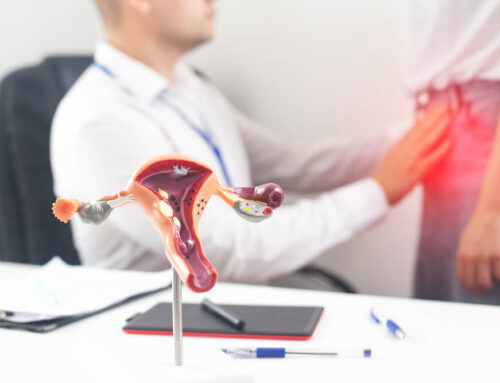As the medical field progressed throughout the years, it brought various solutions and advanced procedures when it came to the examination of the human body. Women’s reproductive healthcare has also endured significant progress and changes, and today many minimally invasive procedures ensure optimal health and functioning of the reproductive system.
One of those procedures also includes hysterosalpingography or HSG testing. If you are wondering what is a hysterosalpingogram, it is a minor X-ray examination of the inner walls of the uterus and the fallopian tubes. During the procedure, a special dye containing iodine is used so that the organs are clearly visible on the x-ray.
If you are looking for a gynecologist specialist in Boca Raton & Boynton Beach, FL, bear in mind that not all medical institutes offer this kind of testing. At Women’s Health Partners, you will be able to get the high-quality service you are looking for and be supported by expert staff who are trained to use the most advanced technology offered today.
What Is a Hysterosalpingogram?

As mentioned in the introduction, a hysterosalpingogram is a procedure doctors use to identify any irregularities in the inside walls of your uterus and fallopian tubes. The HSG procedure helps your chosen doctor determine the shape and condition of the uterus, note any appearances of polyps, fibroids, or scars which can negatively affect your reproductive health, and check if your fallopian tubes are open and healthy.
Some other tests are also helpful when it comes to examining the health of the uterus, but to be able to diagnose blockages, scarring, polyps, fibroids, and other growths on the fallopian tubes which are directly responsible for the egg being fertilized, using the HSG test is the only way.
When it comes to the reasoning behind getting a hysterosalpingogram, one of the most important ones is to be able to examine your fertility levels and the reasons for potential infertility or miscarriages. As said, an HSG test is the only way to thoroughly examine one’s fallopian tubes, which are a crucial organ when we are speaking about fertility in women.
This said, there are a few instances when an HSG procedure should not be done, and some precautionary measures which you should follow:
- The exam should not be done if you think you are pregnant or you have a pelvic infection
- Let your doctor know about any potential allergies to medication or iodinated materials, contrast dyes, or shellfish
- Carry a list of the medication you currently use with you to the exam
How Do I Prepare for an HSG Procedure?
Preparation for any kind of medical procedure is essential, so if you are planning to do an HSG test, below we are bringing you the necessary information so you can prepare as much as possible.
- The testing should be scheduled after the end of your period, before the ovulation, so schedule a test from day six to day ten of your menstrual cycle.
- Oftentimes before the test, antibiotics are given to prevent infection, and they should be taken the day before the exam, on the day of the exam, and the following day.
- Feel free to eat and drink as usual on the day of the test.
- Ask your doctor if taking Ibuprofen or similar medications before the procedure might help with cramps during the procedure.
- It is recommended to arrange a ride to and from the appointment.
- Get a good night’s sleep before the test.
- The medical staff will be there for you if you have any questions before and after the examination.
- Arrive a little earlier to the exam so you can change into a gown and get ready for the procedure
What Does an HSG Test Look Like?
Another way of preparing for a medical examination is knowing what the actual procedure looks like. We created a list of steps that are usually taken when a patient comes in for an HSG procedure.
- The test is most often done in a radiology lab, and it lasts up to half an hour.
- The patient lays down on the exam table and puts their legs on the footrests (as women do at a typical gynecological exam)
- The doctor inserts an instrument called a speculum into the vagina in order to clean the cervix.
- A thin plastic tube (a catheter) is then inserted into the cervix, and the speculum is taken out.
- A special contrast dye gets injected through the catheter, and it fills the uterus and fallopian tubes.
- After this, X-ray images are taken so the doctor can assess the condition of the organs.
After the test, patients are free to go home. There is a potential for vaginal bleeding and cramps a day or two after the procedure. Painkillers are recommended, but if the pain intensifies, you get a fever, or experience heavy bleeding, please contact your chosen doctor as soon as possible.
Are There Any Risks Connected to a Hysterosalpingogram?
Although the test is considered to be very safe and minimally invasive, with only a 1% possibility of complications, there are still potential risks one has to keep in mind for their own safety. The risks include:
- Infection: there is a risk of a pelvic infection caused by the procedure, which occurs most often in patients who already had a tubal disease, and it can lead to damage to the fallopian tubes
- Radiation exposure: although very low, there is still some radiation exposure during an HSG procedure which is why it is not recommended to have this procedure if the patient is pregnant.
- Allergy: some people are allergic to iodine, contrast dyes, and shellfish, so if this is the case, the HSG test should be performed without the presence of these materials in the contrast solution
- Vaginal spotting: it is possible to experience mild vaginal spotting a few days after the procedure, but if the bleeding intensifies, it is essential to contact your doctor immediately
- Fainting: although rarely, it is possible to get light-headed and faint during or after the procedure, so make sure you have someone to accompany you after the testing.
As already mentioned, if you start experiencing high fever, pain, heavy bleeding, lower abdominal pain, or other symptoms after the test, please contact your chosen medical caretaker so they can provide you with help and further diagnosis.
Benefits of the HSG Procedure

Apart from this being one of the only ways to examine your fallopian tubes efficiently, there are other benefits of a hysterosalpingogram. These include:
- Potential unblocking of the fallopian tubes with inserting liquid which can flush mucus and free passages for the egg or sperm
- In some cases, the benefit is the improvement of fertility, where the probability of natural conception increases by up to 30% (as some studies show)
Contact Us!
If you want to learn more about HSG testing, scheduling a procedure, and what to expect, feel free to contact us. We are aware that this procedure cannot be done everywhere, so it is our priority to make it as available and as efficient as possible.





